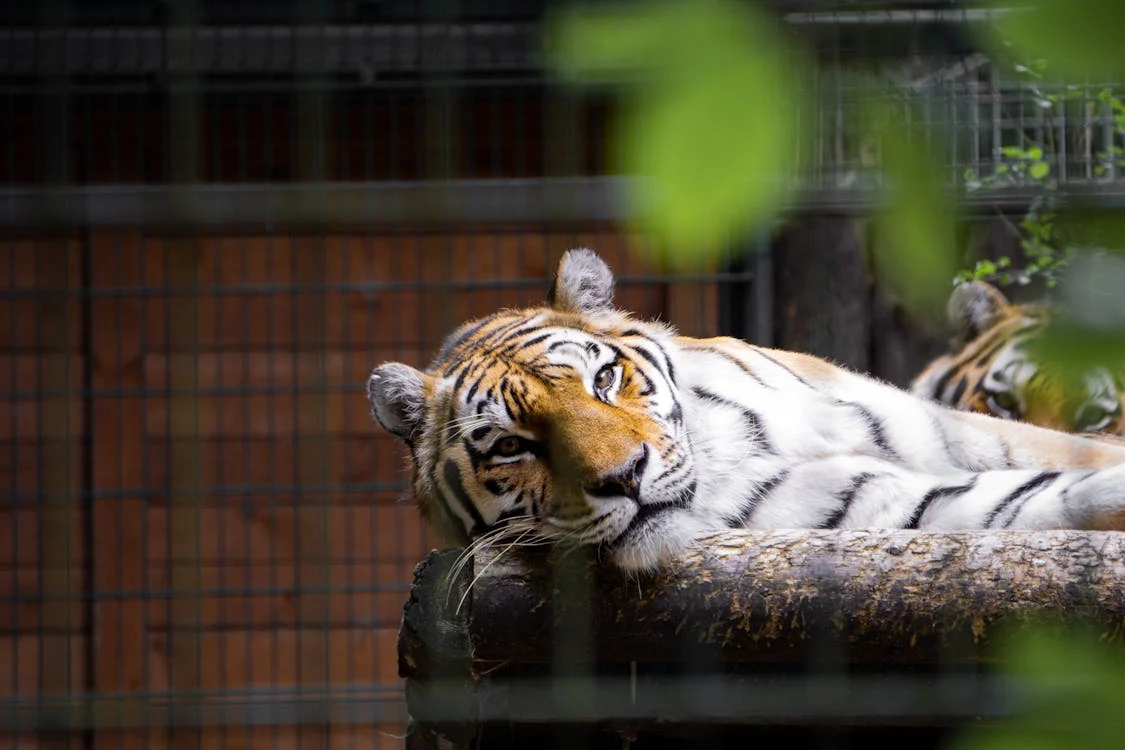Tigers and leopards are two of the most iconic big cats in the world, both belonging to the Panthera genus. While they share some similarities, their behaviors, habitats, and physical characteristics vary significantly. Understanding these differences provides insight into their roles in the ecosystem and highlights the need for conservation efforts.
Physical Differences
Before delving into behavior and habitat, it’s essential to recognize the physical distinctions between tigers and leopards.
- Tigers are the largest members of the cat family, with males weighing between 400 to 600 pounds. They are characterized by their orange coat with black stripes, which provides excellent camouflage in their natural habitat.
- Leopards, on the other hand, are smaller, typically weighing between 80 to 200 pounds. Their coats are golden-yellow with black rosettes, allowing them to blend seamlessly into their surroundings, especially in wooded or bushy areas.
Habitat
Tiger Habitat
Tigers primarily inhabit the dense forests of Asia, including tropical rainforests, mangroves, and grasslands. They require large territories due to their hunting habits, as they tend to prey on large mammals such as deer and wild boar. Tigers thrive in environments that provide adequate cover for stalking their prey and access to water sources.
Leopard Habitat
Leopards are highly adaptable and can be found in a variety of habitats, including savannas, grasslands, rainforests, and even arid regions. They are primarily distributed across sub-Saharan Africa and parts of Asia. Unlike tigers, leopards can thrive in fragmented habitats and are often found in proximity to human settlements. Their ability to climb trees gives them an advantage, allowing them to store food away from scavengers and predators.
Behavioral Differences
Hunting and Diet
Both tigers and leopards are carnivorous, but their hunting strategies differ significantly.
- Tigers are ambush hunters that rely on their strength and size to overpower prey. They typically hunt alone, using their keen sense of hearing and sight to stalk their targets. Tigers often hunt at night and are known for their powerful pouncing ability, which helps them tackle larger prey.
- Leopards, on the other hand, exhibit a more versatile hunting strategy. They are opportunistic feeders, preying on various animals, including smaller mammals, birds, and reptiles. Leopards are known for their stealth and agility, often using their climbing skills to ambush prey from above. They are also more likely to scavenge when necessary, demonstrating adaptability in their feeding habits.
Social Behavior
In terms of social behavior, tigers and leopards display notable differences:
- Tigers are generally solitary animals, except during mating season or when a mother is raising her cubs. They establish and defend large territories, marking their boundaries with scent markings to ward off intruders.
- Leopards, while also predominantly solitary, exhibit more flexible social structures. They may share territories with other leopards, especially in areas with abundant prey. Female leopards are known to be more tolerant of their offspring as they mature, allowing them to stay within their mother’s territory until they are ready to establish their own.
Conservation Status
Both species face threats from habitat loss, poaching, and human-wildlife conflict. Tigers are classified as endangered, with estimates suggesting fewer than 4,000 individuals left in the wild. Leopards, while more widespread, are also facing declining populations due to similar threats, leading to their classification as vulnerable in certain regions.
Conclusion
Understanding the differences between tigers and leopards is crucial for their conservation and management. Each species plays a vital role in its ecosystem, and their survival depends on preserving their natural habitats and addressing the threats they face. By recognizing the unique behaviors and habitat preferences of these magnificent big cats, we can foster greater appreciation and commitment to their conservation.

